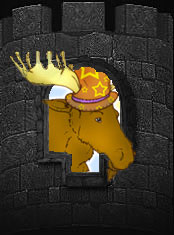I'm sure there are lots of other more experienced monks who can add to this, but here's what I've noticed.
Proximity aggro types: just like live, there are two types of proximity aggro; one where the mob notices you, and one where the mob will assist (ie, social aggro). While in the teens in Warrens, this was useful in the noble camp, since it you could drag a near dead green mob into social aggro radius of a single guard and instead of getting two, you'd get one. Sorry I can't think of a higher lvl example - I guess this one is pretty situational (availability of trivial mobs near the camp you want to split).
Aggro center: I think this is true, but need to test rigorously to validate. Aggro radius is measured against the distance from you to the mob, unless you throw an item (e.g., thurg shuriken), in which case the aggro is centered around the impact loc of the thrown weapon. The northern 6-spawn orc camp in Northern Wastes seems to behave like this. Chuck a star into the outside tent and you get at least 4, but aggro by proximity from behind (see next) and you only get two that are easily split.
Rear vs front: when pulling from behind there might be an advantage in reducing aggro radius (maybe?). An example is the same 6-orc camp in Northern Wastes. There are two side-by-side tents. If you pull from the side, you get the two tent orcs, plus the two campfire orcs. If you pull from aggro from outside, *behind* the tent approaching the orcs from backside, you only get the two tent orcs. It's quite possible that the reason this works in this camp is that the orc in the northern tent is a hair's width distance from the two orcs outside and moving him backward is the only way to avoid. Would like to test this more.
Prioritizing roamers: would absolutely agree that you want to single/split roamers first. Target them and keep a lock so you can keep track of which mob is which.
Indoor pathing: when pulling, if you can get an intervening wall into the pathing back to a mobs spawn point, it can add a critical extra second in distance between mobs walking back (e.g., one mob hits the wall, the other paths back normally). I would like some clarification from any of the GMs on whether using wall-delay like this is considered an exploit here on sod. In any case, the High Paw camp in Paw can be singled by using the water like a wall, the mobs will fall in as pathing back (by setting your position on left or right of water, you can choose left or right mob - but still have to rely on random path back timer to split the other two) and will wall-lag for just a fraction of a second before they warp out of water.
Casters: unlike live, if you resist a spell it will not break FD. That being said, I still like to time my FD after any casts have landed. Also, some casting mobs will self-buff and will periodically have to renew those buffs. When you see they're casting emote, it's a perfect time to attempt a split since they will stay put to finish casting first. As soon as you separate your mob, you can FD and the caster will still be at spawn point and will insta-memblur. Splitting the first two haunters in Valley of Erimal (unless one is a mage with earth pet, which will root you on aggro), or cecuvian seers in warpstone is an example where this works pretty well. Splitting a caster and melee is almost trivial. Especially when you have distance to run to separate the caster (while he's casting) from the melee (while he's chasing you). All-in-all, presence of casters in some ways make it easier to split and break a camp.
Note on path back timers: in some zones it seems like these timers are linked and not randomized (the goblins in GSM for example), while in *most* zones there seems to be two timer intervals that are randomly assigned. Not sure if social versus direct aggro is the difference, or whether or not this is even true but it seems this way to me.
edit: changed offensive word


